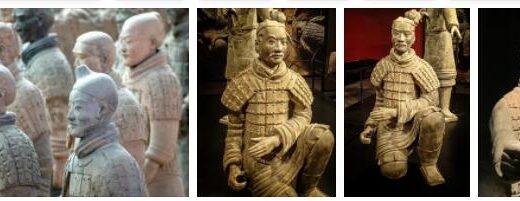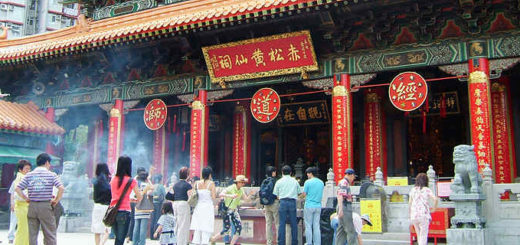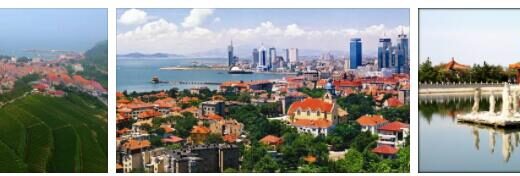World Heritages in China Part 2
Tulou loam buildings in Fujian (World Heritage)
The Hakka settlements are in the rice, tobacco and tea fields in the southwest of Fujian. For a long time, the life of this people was organized according to complex and strict rules. The Hakka still live in large, fortress-like round houses with up to five floors, on which up to 800 people live. The rooms are grouped around a large inner courtyard and only have narrow window openings to the outside.
Tulou loam structures in Fujian: facts
| Official title: | Tulou loam buildings in Fujian |
| Cultural monument: | Combined defense, economic and residential structures of the Hakka people between rice, tea and tobacco fields in the mountainous southwest of Fujian Province in southeast China; Monumental defenses against raids built and expanded from the 12th to the 20th century; mostly round (average diameter 20 m to 70 m, maximum 91 m), but also rectangular, built around an open inner courtyard with several meters thick outer walls made of clay and unfired earth, protruding tiled roofs, wooden structures inside, a few outside windows and an entrance gate ; Living and utility rooms on up to five floors to accommodate up to 800 people, mostly organized in family clans and business communities, but also with cultic sites such as ancestral shrines; Selection of 46 world heritage sites from around 20,000 existing tulous |
| Continent: | Asia |
| Country: | China |
| Location: | Fujian Province, Southeast China |
| Appointment: | 2008 |
| Meaning: | Testimony to an impressive, centuries-old tradition of architecturally designed communal life; unique integrated way of life in harmony with natural conditions; extraordinary, artfully constructed and technically demanding form of human settlement |
Tulou loam buildings in Fujian: history
| early 4th century | Migration of the Hakka from their presumed origin on the Hwangho (Yellow River) to the south |
| late 9th century | Second wave of migration to the south, probably due to drought and war |
| 13th century | Fall of the Southern Song Dynasty and renewed migration of the Hakka to their present homeland, the provinces of Fujian, Guangdong, Jiangxi and Guangxi |
Dialolou Buildings in Kaiping (World Heritage)
According to ehealthfacts, the residential towers (Dialolou) in the southern Chinese city of Kaiping form a unique architectural legacy from the 19th century. The multi-storey fortified tower houses were built as a reaction to the bandit system.
Dialolou buildings in Kaiping: facts
| Official title: | Dialolou towers and villages in Kaiping |
| Cultural monument: | Multi-storey tower-like houses for defense against attacks (Diaolou, “fortress tower”) in the area of the southern Chinese city of Kaiping; going back to a corresponding tradition of the Ming period (14th-17th centuries); Reinforced concrete security structures built between 1900 and 1935 by relatively wealthy Chinese abroad returning from South Asia, Australia and North America; various forms of use: temporary shelters, permanent dwellings, defenses; world heritage sites selected from around 1,600 still existing Diaolou 20 in four groups; characteristic mixture of Chinese building styles with architectural elements of the emigration countries |
| Continent: | Asia |
| Country: | China |
| Location: | Kaiping, 110 km west of Guangzhou, South China |
| Appointment: | 2007 |
| Meaning: | Exceptional combination of residential and defense culture, outstanding and well-preserved testimony to the mixing of Chinese and Western forms of construction; impressive document of the resumption of historical forms of self-defense; concise example of the importance of emigration for Chinese culture |
Yin Xu (World Heritage)
Yin Xu, about 500 km south of Beijing, was from the 14th to the 11th centuries BC. Capital of the Shang dynasty. During excavations, palaces, graves, workshops and inscribed oracle bones were found, which suggest a highly developed society.
Yin Xu: Facts
| Official title: | Yin Xu |
| Cultural monument: | Archaeological site of Yin, the capital of the late Shang dynasty (1300-1046 BC), after its fall Yin Xu, “ruined city of Yin”; oldest historically documented Chinese ruling family (16th century to approx. 1050 BC); extensive excavations of royal tombs (with additions), palaces, temples, jade carvings, bronze tools, 80 house foundations and much more on an area of 30 km² on the central section of the river Hwangho; completely preserved tomb of Fu Hao, member of the royal family; Finds of inscribed oracle bones (from turtle shell), oldest evidence of Chinese characters and an interpretation of the future |
| Continent: | Asia |
| Country: | China |
| Location: | Anyang, about 500 km south of Beijing |
| Appointment: | 2006 |
| Meaning: | Unique evidence of the Chinese Bronze Age, a heyday of Chinese culture; large number of well-preserved, outstanding examples of early Chinese building and craftsmanship; valuable documents of early belief and writing systems |



